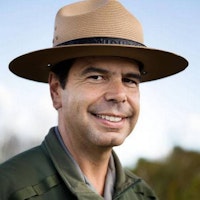Living Laboratories: What Parks and Protected Areas Teach Us About Climate Solutions
Setup
As of last year, more than 70 countries had agreed to set a target of safeguarding 30% of their land and sea territory by 2030 to help preserve nature and biodiversity. Protected areas like National Parks, Monuments, and Marine Sanctuaries serve as “living laboratories,” allowing researchers to track how nature is adapting to climate change in the absence of most other human disturbances. Increasingly, protected areas are also areas in which indigenous people are reviving traditions that hold deep cultural resonance and enhance understanding of ecology in ways overlooked by Western scientific methods. This session will center South Florida’s spectacular National Parks and Sanctuaries, exploring the role of these national treasures in protecting the unique biodiversity of this region — and in developing climate solutions.
- 2022 Climate
Explore More
Technology

AI has the potential to create vibrant, inclusive communities as civil society organizations harness it to tackle inequality, industry leverages it to foster fairer practices,...

Why do some conversations succeed while others stumble? The neurology and psychology of communication offer surprising explanations for why human connection goes right or wron...

Increasingly, AI informs our work output, our social views and our awareness of the world. Join SiriusXM host Mike Muse in conversation with Meta officials to explore the impl...

America’s teenagers are facing a mental health crisis; 1 in 3 teen girls say they’ve considered suicide in the past year. Many young people, parents and mental health professi...

Two billion people worldwide are set to vote in elections this year, amid global conflict, societal mistrust, broken information ecosystems — and the truth-destroying disrupti...

Amid seismic shifts in the entertainment world, Oscar-, Golden Globe- and Emmy-winning Brian Grazer has managed to keep pivoting to new ways to tell stories in movies, TV and...

In the last 30 years, conglomerates from Amazon to Netflix to Spotify have changed the way we interact with media, books, fashion and music. Creatives are struggling to mainta...

The innovative philanthropist who paid off the student debt of the entire graduating class of Morehouse College class of 2019 talks about how to ensure all communities benefit...

Uncle Sam is rich enough that every young person in America can benefit from generational wealth transfer. Leaders from impact investing, philanthropy and the finance sector d...

It sounds like sci-fi: Scientists are beaming solar energy from space, subbing seaweed for plastic and brightening clouds to reflect sunlight to lower temperatures in a warmin...

From climate change and mental health to hate crimes and chronic school absenteeism, no challenge is too big for young people’s community-changing solutions. Hear from teams o...

Artificial intelligence is revolutionizing health care by improving patient navigation, telehealth and the speed of drug development. From enhancing patient and provider exper...

In the world of advertising, technology and creativity are shaping a new narrative. Could tech lead to more trust — not less — with younger generations? From AI-driven campaig...

Americans’ trust in the media is near an all-time low — a crisis exacerbated by waves of misinformation, conspiracy theories, fake news, social media and AI-generated content....

The most fearless voice in tech journalism and author of the bestseller “Burn Book” shares her predictions about the future of the digital landscape — and the need to keep hol...

Part 1. The Disruptors: Two of Silicon Valley’s most innovative founders also share a tight friendship. Airbnb CEO Brian Chesky has transformed how people travel, host and ex...

Brain-computer interfaces show potential to restore function to people impacted by incurable neurological conditions such as stroke, spinal cord injury, traumatic brain injury...

One of the architects of artificial intelligence, now the CEO of Microsoft AI, shares what he sees ahead for AI — and for humanity — as we stand at this digital precipice.

AI’s evolution over the next two decades will redefine the white spaces of uncharted knowledge, revolutionize industries, alter societal dynamics and challenge ethical bounda...

In the aftermath of the sentencing of disgraced FTX CEO Sam Bankman-Fried, celebrated author Michael Lewis shares new insights about the spectacular downfall of SBF, whom he s...





